- Home
- slideshows
- miscellaneous
- 15 photos of the USS Indianapolis, whose World War II sinking started the deadliest shark attack in history
15 photos of the USS Indianapolis, whose World War II sinking started the deadliest shark attack in history
The USS Indianapolis was a Portland-class cruiser that commissioned in 1932.

About 610 feet long and a beam of about 66 feet, the Indianapolis had a full load displacement of 11,574 tons, and eight White-Forster boilers that brought it to a top speed of about 37 mph.
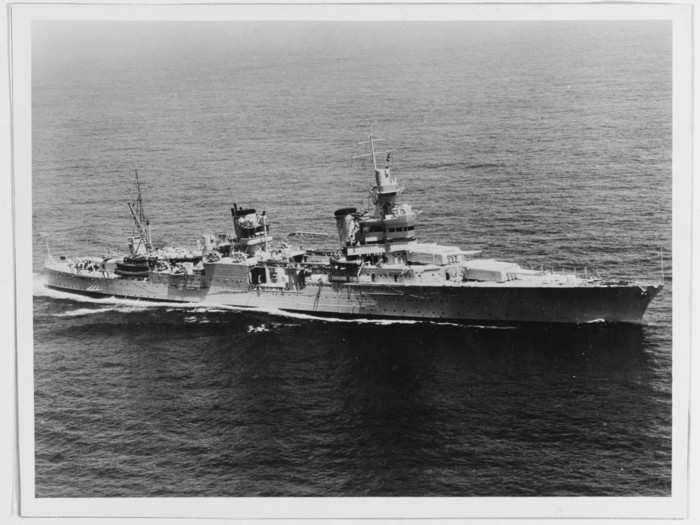
In fact, the Indianapolis was built with rather thin armor plating. While it saved weight and made the ship fast, it also made the ship vulnerable to torpedoes and mines.
Source: globalsecurity.org
The ship was armed with nine eight-inch guns (two of which are seen below in the bow), four five-inch guns, twenty-four 40mm intermediate range guns and thirty-two 20mm guns.
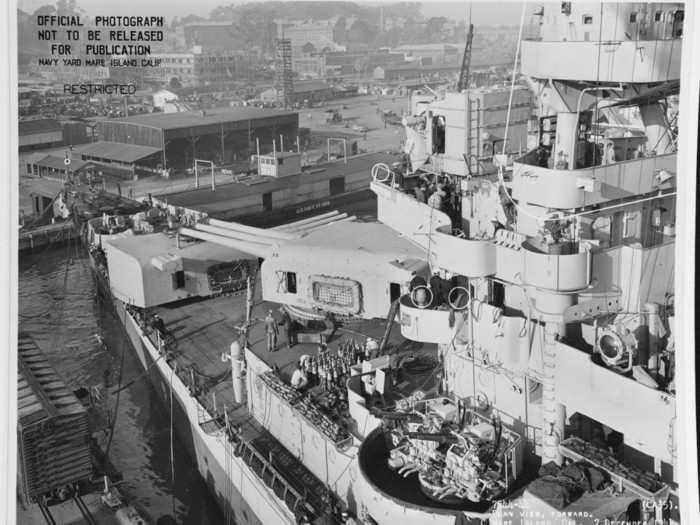
It even had two Curtiss O2U scout floatplanes.
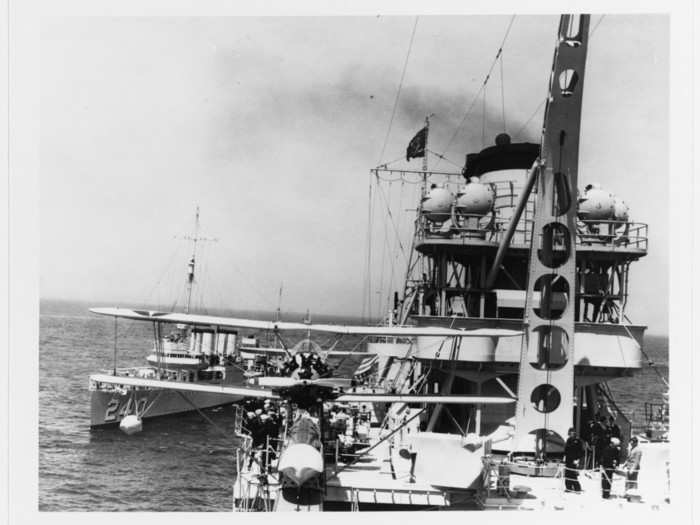
President Franklin Roosevelt would go aboard the Indianapolis several times before WWII, and even took the ship on a "Good Neighbor" cruise to South America in 1936.
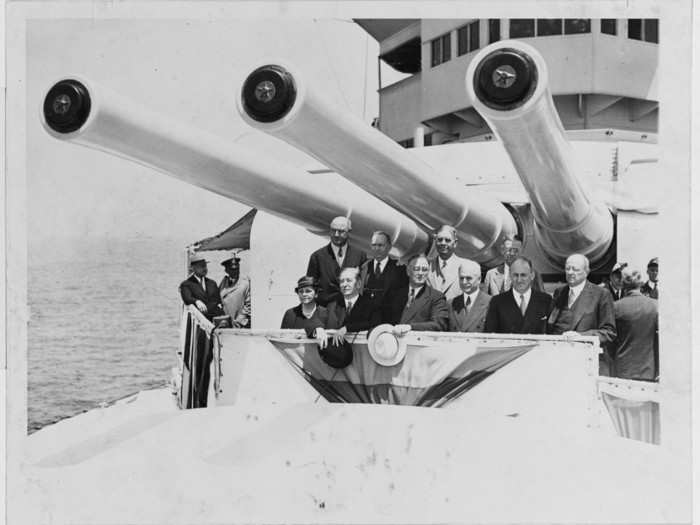
And he stayed in this cabin.
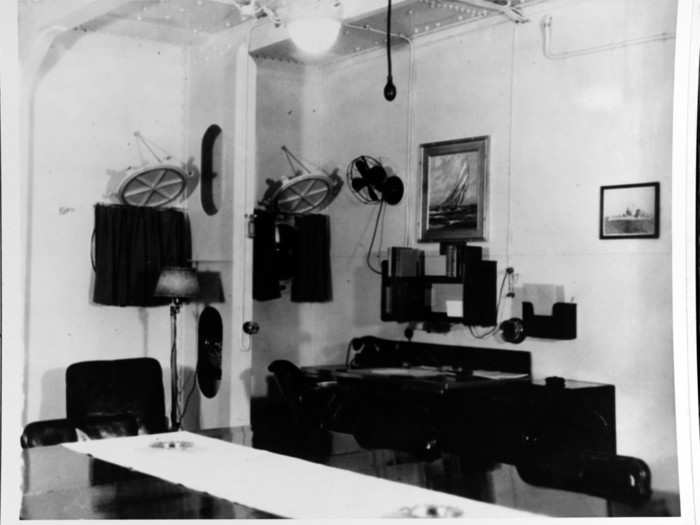
During WWII, the Indianapolis took part in many operations in the Pacific, including the Aleutian Islands, Iwo Jima, the Battle of Saipan, and more.
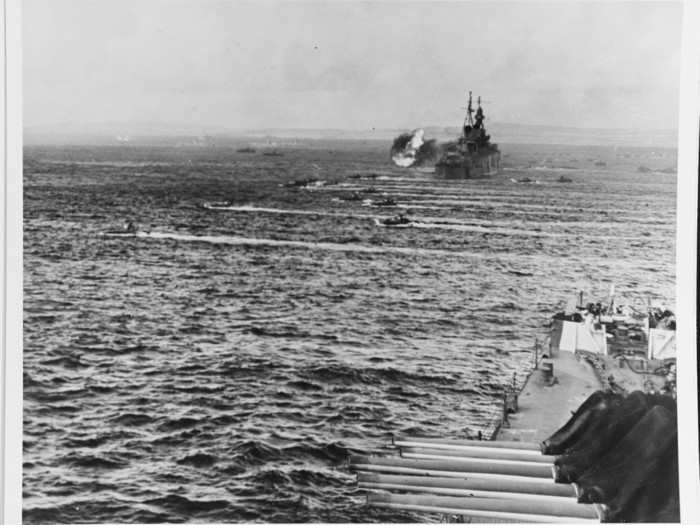
On March 31, 1945, shortly before the Battle of Okinawa, the Indianapolis was hit in the stern by a Japanese kamikaze pilot, crashing through a mess hall and berthing and killing nine American sailors.
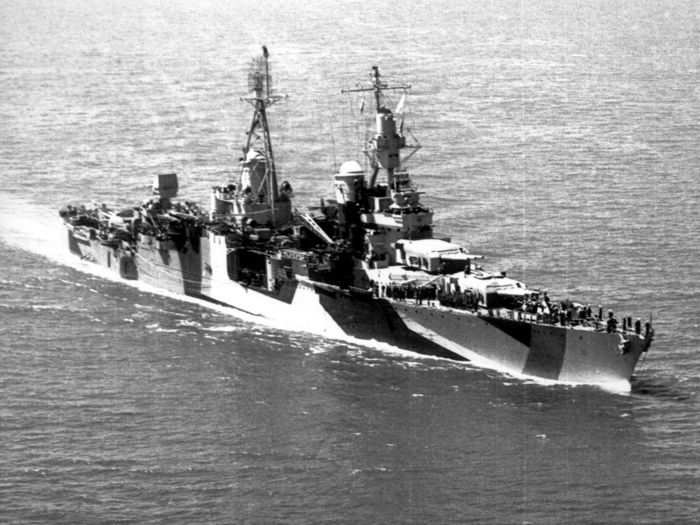
The ship was taken back to Mare Island, CA and overhauled (after which this picture was taken).
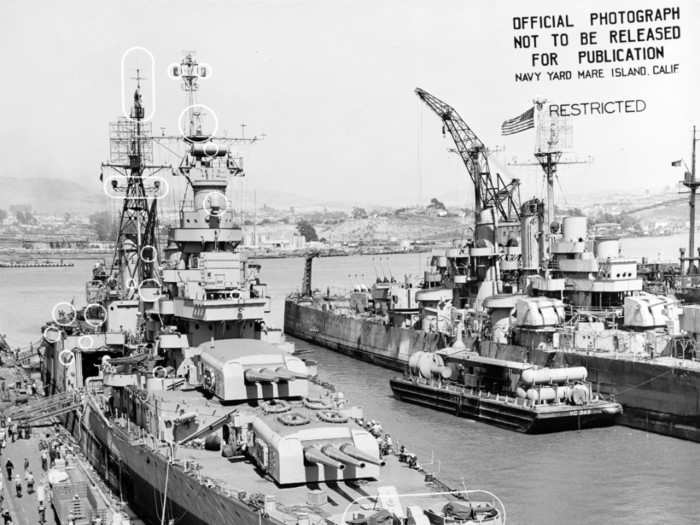
After it was overhauled, the USS Indianapolis was given a secret mission: transporting enriched uranium and other materials for the first atomic bomb on Hiroshima to a naval base on the Pacific island of Tinian.
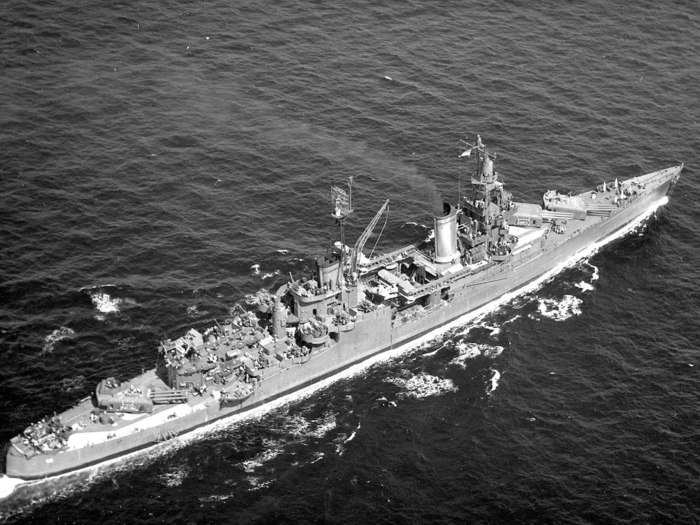
On July 30, after delivering the materials, the Indianapolis was sailing unaccompanied from Tinian to the Philippines to prepare for an invasion of Japan.
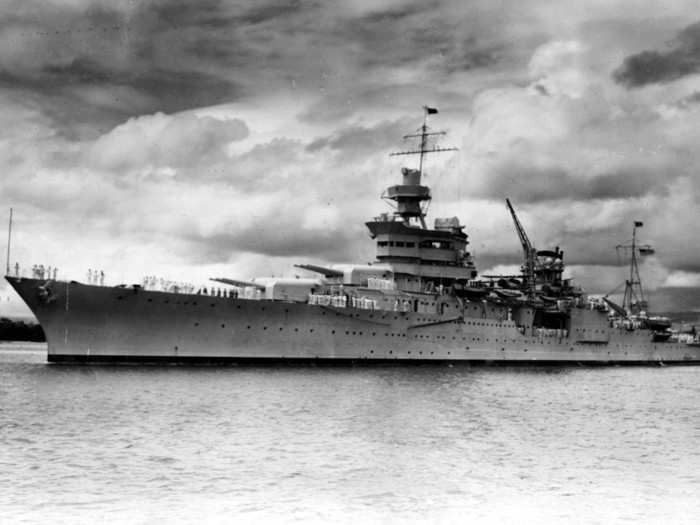
Shortly before 12:15 a.m., this Japanese submarine, I-58, which was commanded by Mochitsura Hashimoto, fired six Type 95 torpedoes at the Indianapolis.

Here's a shot of the I-58's forward torpedo room in 1946.
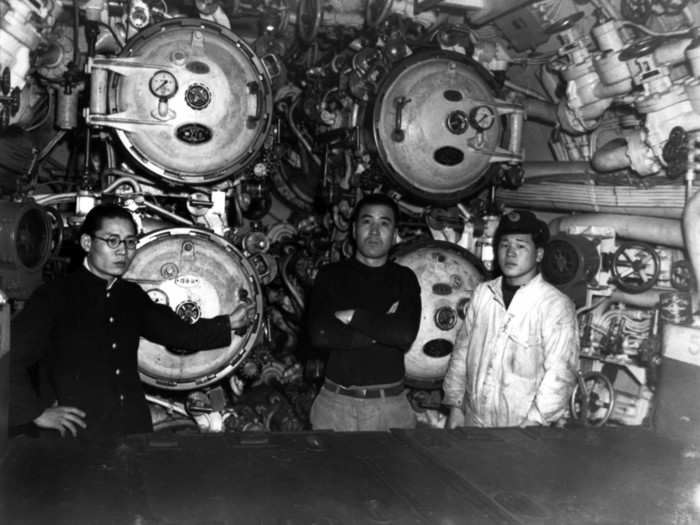
The first torpedo hit the Indianapolis' starboard bow. The second hit the middle of the ship, igniting the fuel tank. The ship sank about 12 minutes after getting struck.
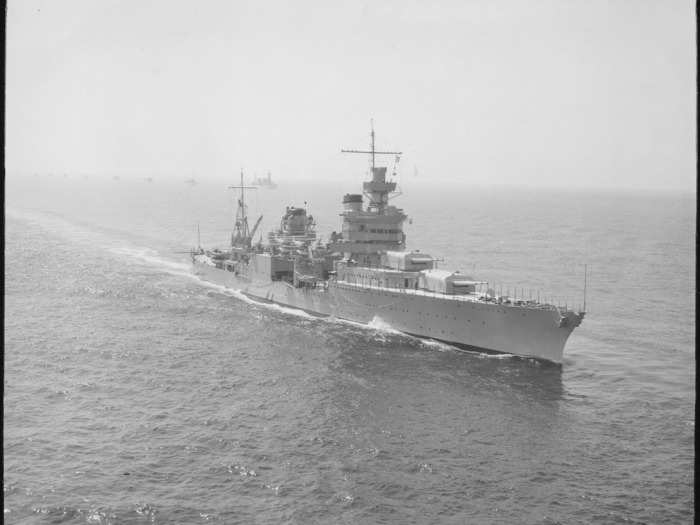
About 300 sailors and Marines were trapped inside and went down with the ship. Approximately 900 survivors wouldn't be rescued for about four days because the ship's distress call was thought to have been a Japanese ambush.
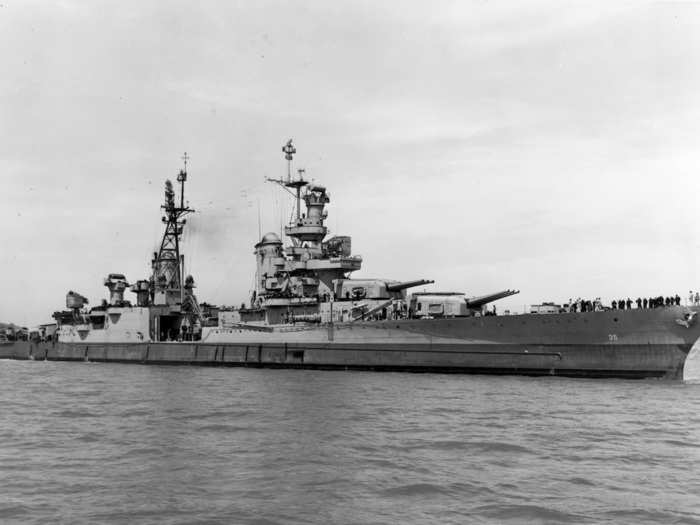
Subjected to dehydration, heat, delirium from drinking salt water, and sharks, only 316 sailors would survive the four days in the water.
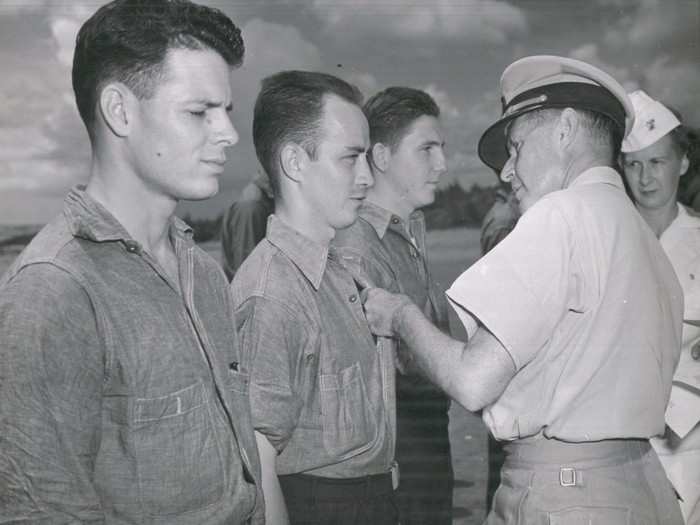
The loud noise, thrashing and blood drew in many sharks, which are thought to have killed a few dozen to 150 sailors, making it the worst shark attack in history.
The sailors and Marines huddled together in large packs for protection, but were slowly picked off over the four days, as the sharks continued biting the bodies of the dead.
"Men began drinking salt water so much that they were very delirious,"survivor Granville Crane later said. "In fact, a lot of them had weapons like knives, and they’d be so crazy, that they’d be fighting amongst themselves and killing one another. And then there’d be others that drank so much [salt water] that they were seeing things. They’d say, 'The Indy is down below, and they’re giving out fresh water and food in the galley!' And they’d swim down, and a shark would get them. And you could see the sharks eating your comrade."
You can read more first and second hand accounts of survivors here, here and here.
The 316 survivors were finally rescued on August 2. Capt. Charles McVay III, the ship's commanding officer, was later court-martialed for failing to maneuver the ship in zig zags that might have evaded torpedoes. It was a highly controversial verdict, and McVay was exonerated after his death, in 2000.
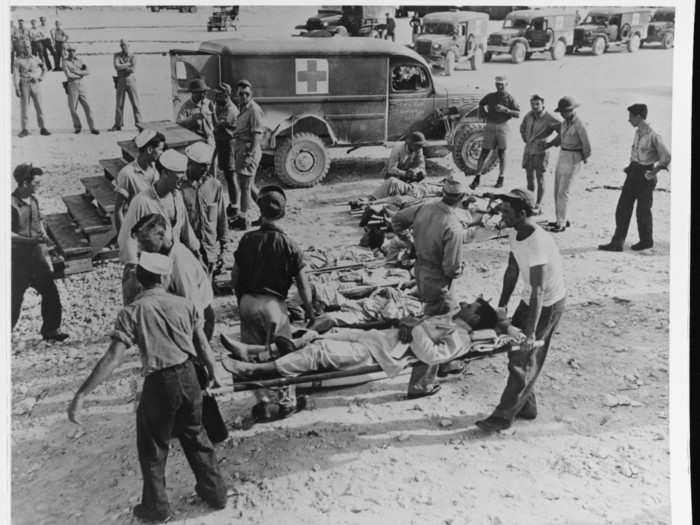
Source: History.com
Popular Right Now
Popular Keywords
Advertisement